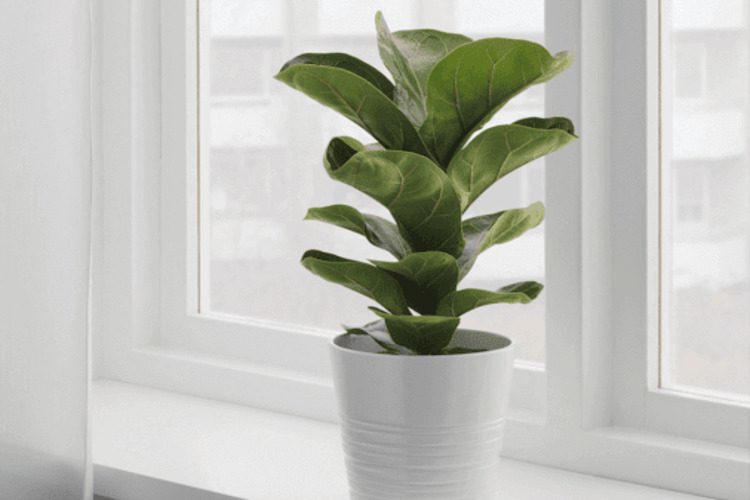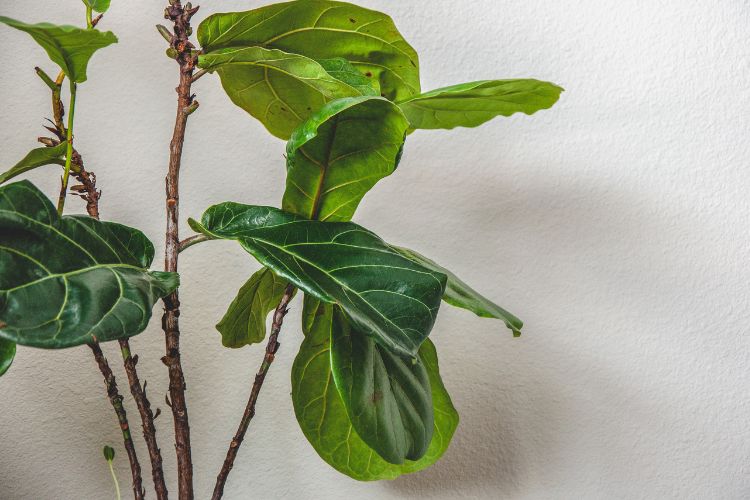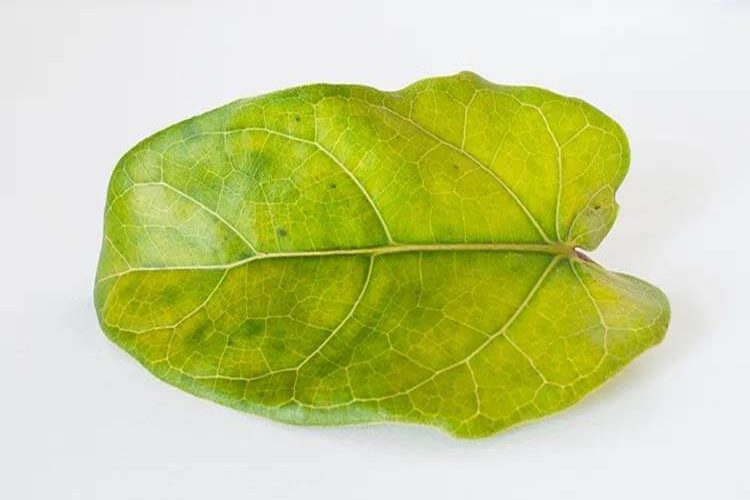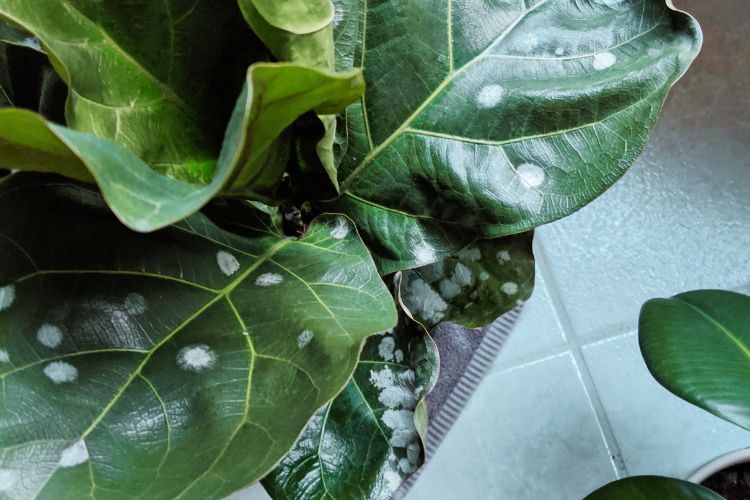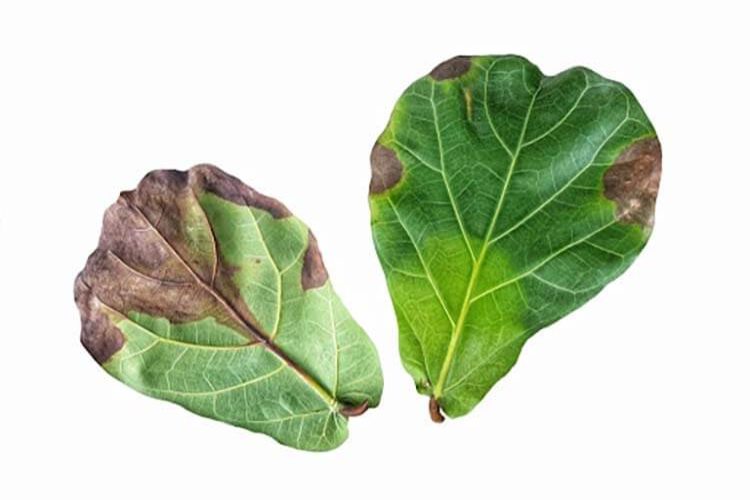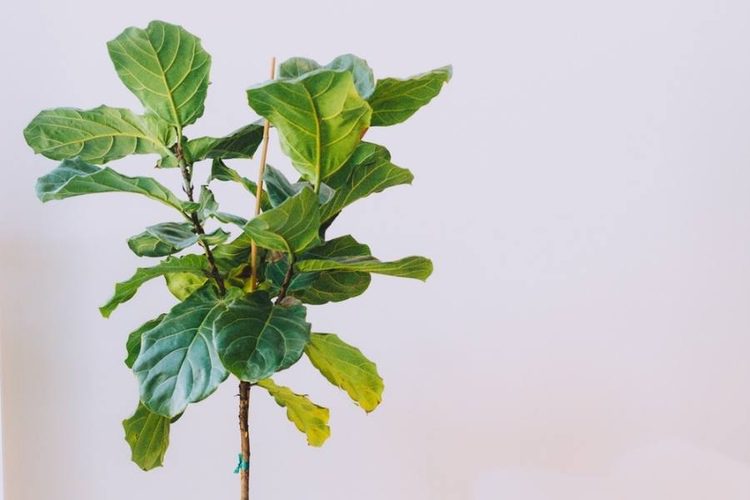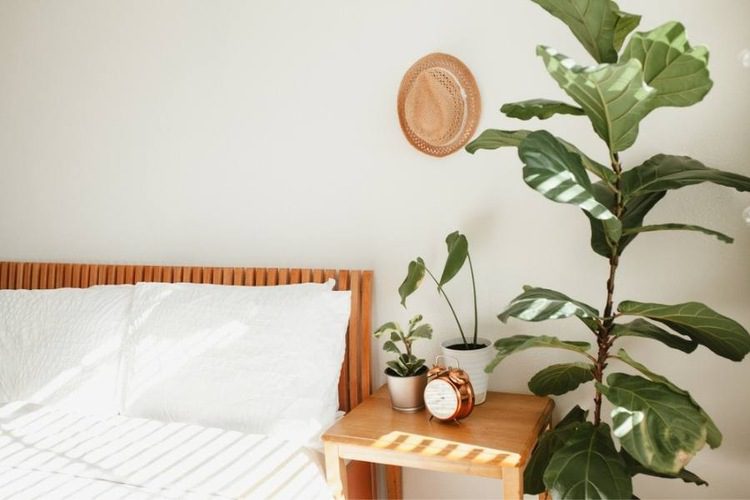Fiddle Leaf Fig Leaves Curling: Common Reasons And Fix
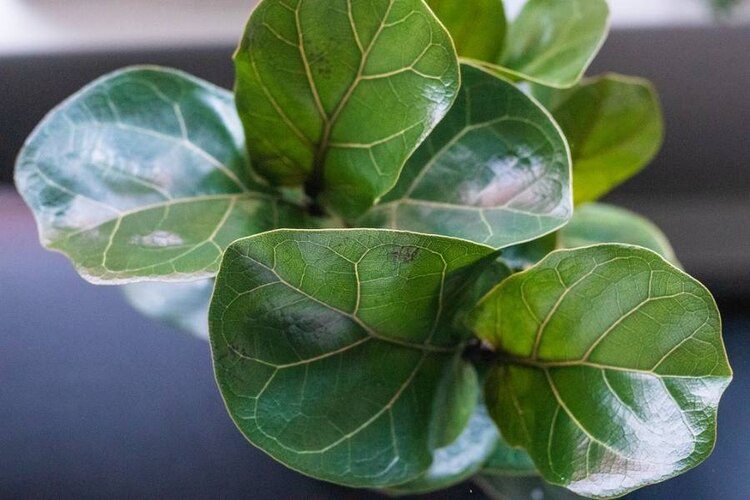
Why are the fiddle leaf fig leaves curling? Figuring out the exact cause can be tricky, as there are so many reasons for leaves to curl. In particular, the curling of fiddle leaf fig leaves can be caused by underwatering, pot size issues, lack of humidity, poor-quality water, pest infestation, fiddle fig root rot, improper fertilization, the wrong soil mix, lighting issues, and temperature fluctuations. It’s time to dive into this article for an in-depth explanation of potential causes.
Why Is Fiddle Leaf Fig Leaf Curling?
Your fiddle leaf fig leaves are curling because of environmental shock, such as temperature, light, or even the nutrients in the soil. Besides, curling leaves can be due to overwatering or a lack of water. So, let’s look at each cause of fiddle leaf fig curling.
Underwatering
Water is essential for plants to carry out their everyday operations and collect nutrients in the soil. These plants, in particular, require a considerable amount of moisture and water since they consume a lot of energy to develop huge leaves.
Your plant will get dry if you do not give it enough water. Besides, if the soil becomes too dry during watering sessions, the leaves begin to curl. If you’re not sure how much you should water your fiddle leaf fig plants, start with one glass of water once per week. Fiddle-leaf fig trees prefer well-draining soil and should not be overwatered, as this can lead to root rot.
Check it and water it right away when the soil seems chilly but not moist. Then, depending on how your tree responds, you can change the watering routine accordingly.
Pot Size Issues
Whenever changing the container for your tree, avoid using a container that is either too large or too tiny. The new container should have a diameter of at least 6 inches greater than the old one.
The tree can succumb to root decay, mineral accumulation, or underwatering if you plant your fiddle leaf fig tree in a too-big container for them. The soil stores excessive moisture and nutrients, or the massive surface of the ground may mislead you into thinking it does not need watering yet.
Your fiddle-leaf fig tree will get root-bound if the pot is too narrow. The rhizome will then be broken, and there will be insufficient nutrients to feed your tree. The leaves will curl if you choose the wrong pot size since they won’t get enough water and nutrients.
Lack Of Humidity
As shared earlier, these plants come from Africa’s tropical rainforests. They flourish in areas with a high level of humidity.
Even when you can’t give your plant that much humidity, ensure it doesn’t get too dry. The trees prefer temperatures between 65 and 75 degrees Fahrenheit. Anything less than that is unsuitable for this species.
The tree will not retain hydration because of low humidity, and the soil may dry up rapidly. The leaves might curl as a consequence of the shortage of moisture.
Poor-Quality Water
The water you are using for your tree impacts its health. Some aspects of water cause them to get irritated. Chlorine and fluoride, for instance, are frequently present in tap water. When absorbed, they might damage the body and roots of your tree.
In the same way, some water has a high mineral concentration. Mineral concentrations in distilled water are higher than in tap water. These elements can induce salt accumulation in the soil, obstructing the roots’ capacity to absorb essential nutrients and leading the leaves to curl.
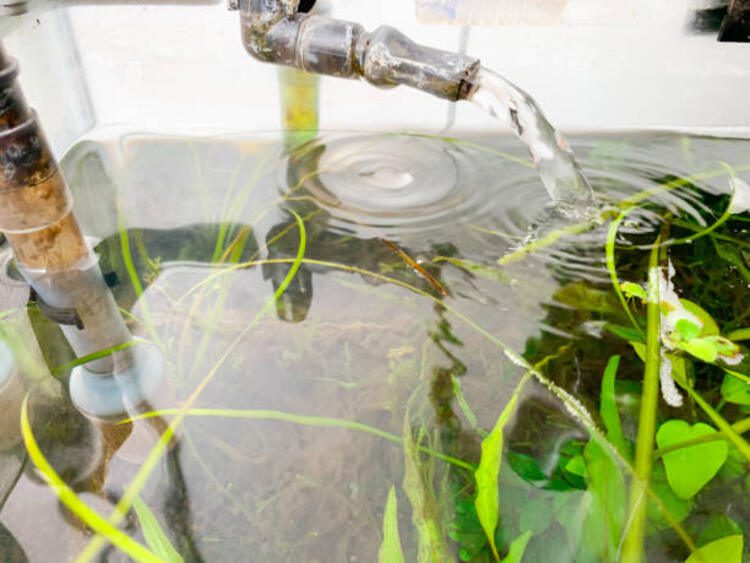
Pest Infestation
Pests occasionally infest your plants. Mealybugs, scales, and spider mites are among the insects that commonly affect their leaves. These bugs eat the tree’s sap and absorb all the nutrients, leaving your plant nutritionally deficient. Curling leaves are the result of a lack of nutrition.
Insects such as mealybugs might also leave a deposit on your tree, which can cause mold to grow. Bug infestations cause curling leaves because your plant loses nutrients when the pests harm it.
Fiddle Fig Root Rot
Fiddle leaf root rot occurs when you place the roots in moist environments for an extended period. Since the soil isn’t allowed to dry out during watering, this phenomenon happens due to overwatering. As water cannot leave the container and the stems need to stay in the liquid, poor drainage might also lead to fiddle leaf fig root rot and overwatering.
Root rot in fiddle leaf figs leads to fiddle leaf fig curling leaves, which causes extensive harm to the rhizome. Rot causes roots to become weak, brown, and mushy, and they stop working correctly. It indicates the rhizome might be unable to draw nutrients and water into the soil, and the leaves of the sick tree will curl due to the absence of these essential elements.
Improper Fertilization
The species prefer to be supplemented with a 3:1:2 ratio of nitrogen, potassium, and phosphate. The leaves will curl if you employ too much fertilizer or an obscene amount. If you don’t give your plant adequate fertilizer, it won’t get enough nutrients to thrive. As a result, the leaves will surely curl.
Moreover, overfertilization results in a salt and mineral buildup in the soil, triggering leaf curling. This buildup then travels up the tree’s leaves, burning and killing them. The root system is also harmed due to this phenomenon, which makes it less effective at transporting essential vitamins and minerals to the leaves.
Wrong Soil Mix
Plants have different soil requirements. It’s critical to know which soil type your plant will thrive on. If you don’t use the appropriate soil, it may hold water and harm the roots, resulting in various issues, including curled leaves.
Furthermore, employing the incorrect soil might create an ideal environment conducive to the growth of fungi and bacteria. In general, these trees require well-draining, nutrient-rich, and aerated soil.
Lighting
These plants thrive in bright light for lengthy periods. As a result, they require a minimum of 6 to 7 hours of sunlight per day to stay healthy. They won’t be capable of photosynthesis if there isn’t enough light. Because the leaves aren’t getting enough nutrition, they may curl.
It’s important to note that these plants do not thrive in direct sunlight. On the other hand, they flourish under artificial lighting. Since the soil moisture evaporates too rapidly in direct sunlight, the tree can become overheated, resulting in underwatering.
Leaves exposed to direct sunlight might become burned. Leaves will curl as a result of these reasons.
Temperature
These plants are picky regarding consistency. Even the tiniest adjustment might shock or stress this species. If the tree does not have a steady temperature, it will curl its leaves. Between 65 and 75 degrees Fahrenheit is suitable for these trees.
The temperature drops dramatically during the cold season. If your tree is exposed to it, the leaves will curl as well. Placing the tree near an air conditioner or cold drafts will shock your tree, which will cause it to dry and curl its leaves.
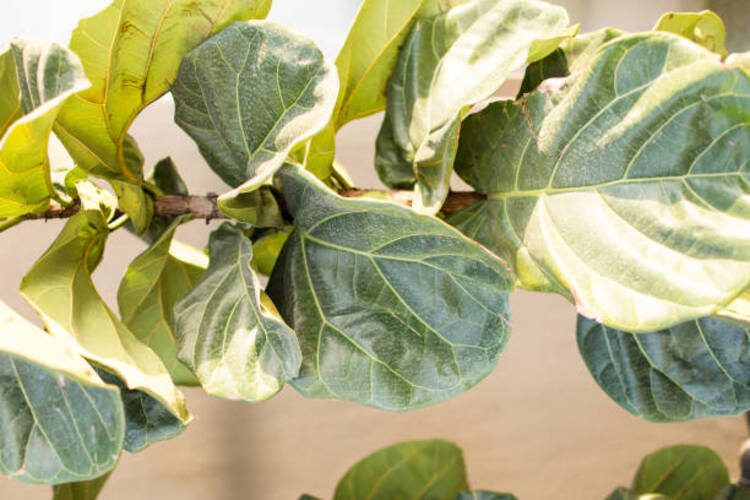
How Many Types Of Fiddle Leaf Fig?
These trees, also called Ficus Lyrata, are well-known for their unique foliage. The violin-shaped leaves on these tall trees are very big, richly veined, and grow upright. These trees, which come from Western Africa’s tropical environment, flourish in warm, light, and humid circumstances, making it difficult for them to grow inside the house.
Yet they are relatively resilient and can tolerate less-than-ideal conditions. They’ll grow in a room with filtered, bright light or a balcony that faces east. If you can place these trees in floor-standing pots that allow them to develop at least 6 feet in height, it makes an excellent focal point for a space.
They proliferate and may be planted at any time of year whenever you buy a young fiddle leaf fig plant to keep inside your home. The plants will flourish with proper watering and warm temperatures. Bear in mind that these beautiful plants are poisonous to dogs and cats.
Ficus Lyrata is the primary type and most commonly grown fiddle leaf fig in gardens. However, there is a variety available, including:
- Ficus Lyrata Variegata: This type is an unusual cultivar with striking green and cream-colored foliage.
- Ficus Lyrata Compacta: This variant, which can grow approximately 5 feet in height, has smaller, more clustered leaves than the parent species.
- Ficus Lyrata Bambino: This dwarf cultivar only grows to a height of just a few feet.
How To Fix Fiddle Leaf Fig Leaves Curling?
After you’ve confirmed that your plant’s leaves are suffering from this dire situation, you should find ways to save them right away. You can consider the following solutions:
Offer Additional Water To Your Plant
Maintain a watchful eye on your plant’s soil. Once the soil surface is dry, it’s best to water your tree. Fiddle-leaf fig trees should be watered when the top inch of soil is dry, which may vary depending on environmental factors such as temperature and humidity.
When should you water your tree? Here are some valuable tips:
- Poke the index finger in the soil, about 1 to 2 inches deep
- Check the moisture
- If the soil is too dry, water it.
- If the soil is wet, don’t water it.
The soil may dry out sooner in the warm season, causing you to water your tree more frequently. The tree might not require much watering during the cold season because the soil will stay moist for longer.
Remember that these trees are tropical plants, so try to create humid environments in the places where you plant them.
Select The Proper Pot
These trees require a container that is at least 6 inches wider in diameter than the previous one when repotting. Your plant will have to be transplanted into an enormous container if it has grown out of the current one. However, be gentle, as it dislikes being moved.
Once repotted, it’ll take a couple of weeks for your tree to adjust to the new surroundings. Once the living conditions change, these plants go through a period of adjustment.
Increase Humidity
If the environment where you place your tree is dry, there are some things you can do to increase humidity:
- Utilize a humidifier: It helps keep the air moist.
- Assemble a group of plants: When one plant’s moisture evaporates, it offers humidity to the others through the air.
- Utilize pebble trays: Place the plant container in a tray filled with pebbles. Fill the tray with water. The water will gently evaporate, leaving humidity surrounding your tree.
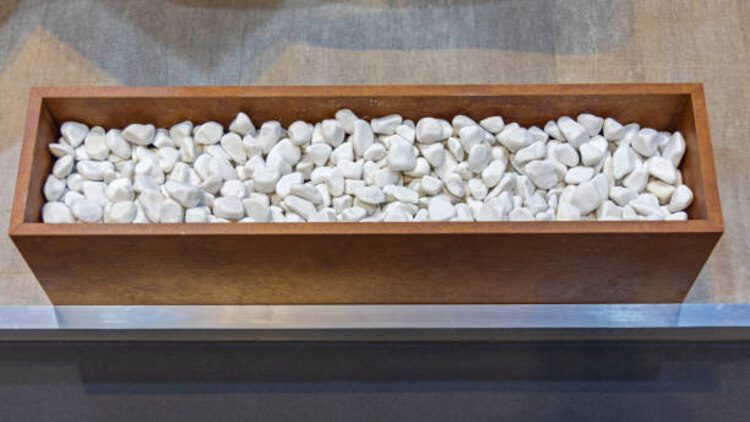
Get Rid Of Insects
It would be best if you took action as soon as you discovered bugs on your tree. Wipe the stem and leaves of your tree with a clean, moist towel. Repeat this practice for a few days until no bugs remain.
You may also use one tablespoon of cleaning solution combined with 1 gallon of water to spray onto the tree. Besides, neem oil is a natural way to keep insects away from the plant.
Apply Right Fertilizer Ratio
Fiddle-leaf figs should be fertilized with a balanced fertilizer every 2-4 weeks during the growing season and should not be fertilized in the winter. Don’t fertilize your tree because it won’t help it and will contribute to overfertilization. Apply plant food that has been diluted according to the package directions. Dilution is essential to minimize overfertilization.
Improve Soil Quality
Rather than using just soil, start with a 1 to 2-inch gravel layer on the container bottom, followed by the ground. The drainage will be better as a result of this action.
Provide Light Properly
Choose a position for your tree that gets plenty of indirect, bright light. If you’re still concerned that your plant is receiving excessively direct sunlight, you can cover it by using solar coverings on the window. If your room is just bright for about one or two hours during the day, you might want to relocate your lamp.
Keep The Temperature Stable
To get a precise temperature reading, put a thermometer in the Fiddle Leaf Fig. Take it to a separate room when it’s excessively chilly or too hot.
Place the tree away from air conditioners, heaters, drafts, and radiators. These items can drastically alter the space temperature, which will shock your tree.
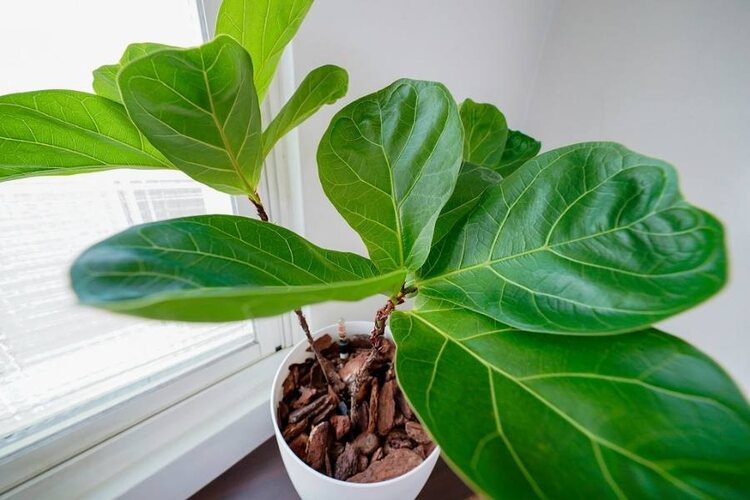
Conclusion
This article has eventually explained the potential causes of the question, Why are fiddle leaf fig leaves curling? Overall, many factors lead to this unhealthy situation for your plants, such as light, water, humidity, fertilizer, temperature, or soil type.
Besides, Swipe Garden also recommends the most effective ways to save your fiddle fig leaves from curling. Let’s apply one of those solutions right after you detect any signs of curled leaves!


